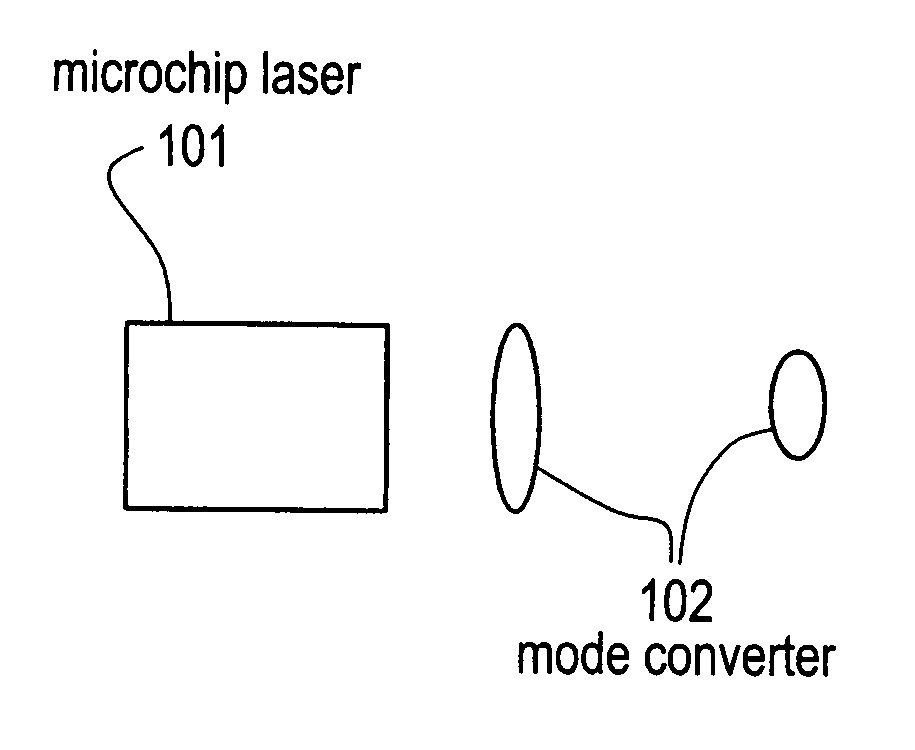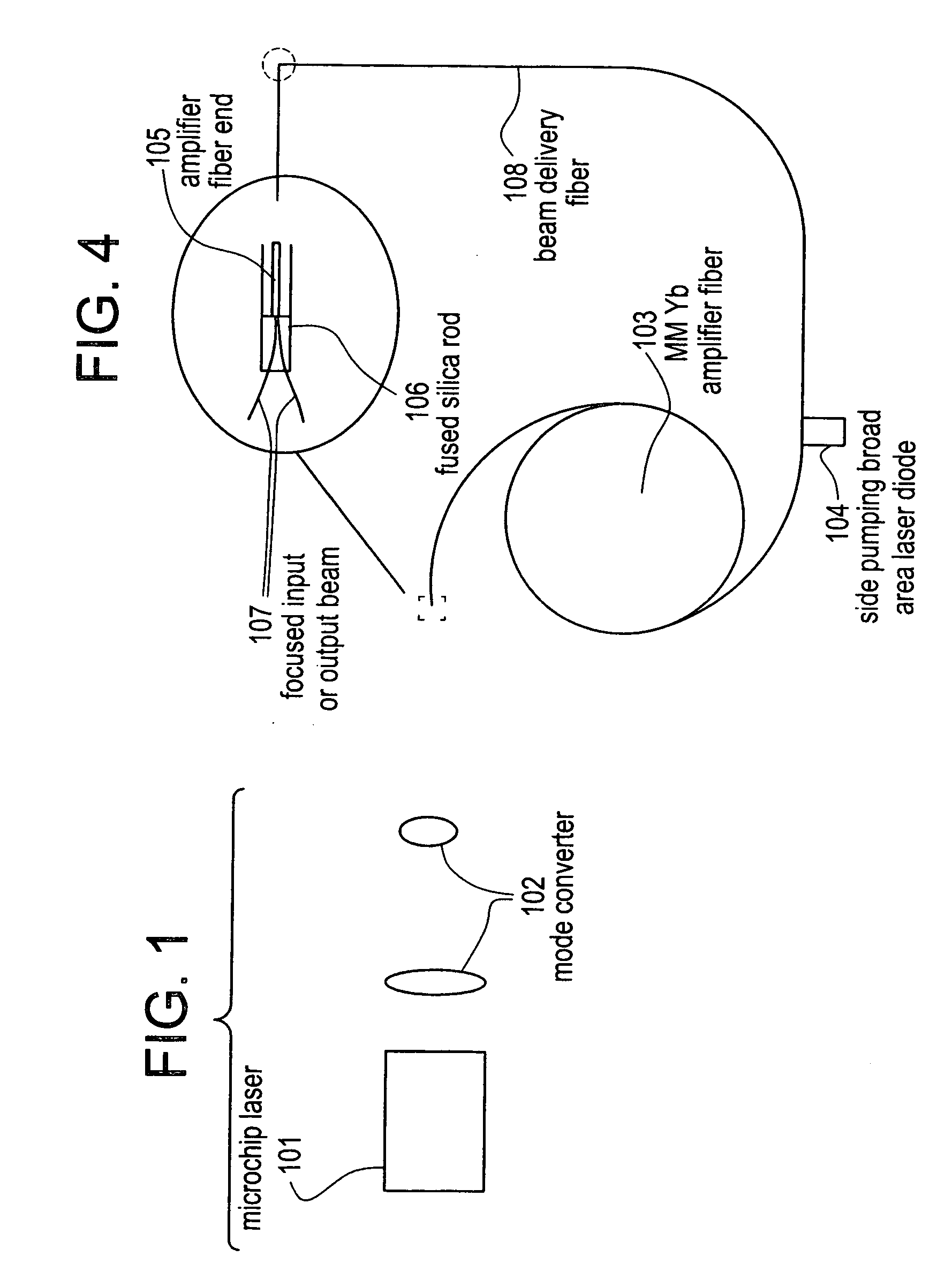Microchip - Yb fiber hybrid optical amplifier for micro-machining and marking
a hybrid optical amplifier and microchip technology, applied in the field of laser systems, can solve the problems of inability to obtain cleanly machined features with this machining technique, unacceptable collateral damage to the surrounding tissues, and inability to achieve heat transfer into the material for many applications, etc., to achieve short pulse duration, high efficiency, and high energy.
- Summary
- Abstract
- Description
- Claims
- Application Information
AI Technical Summary
Benefits of technology
Problems solved by technology
Method used
Image
Examples
Embodiment Construction
[0026]FIG. 1 illustrates the system configuration of the laser according to the present invention. In this Figure, reference numeral 101 indicates a microchip laser source, illustrated in greater detail in FIGS. 2 and 2(a). It should be noted that, as used herein, the term “micro chip laser” refers to a laser of small device size, where at least some of the components, such as the gain medium and the end mirror, are monolithic. In this specification, the terms “microchip laser” and “microlaser” are used interchangeably to refer to a laser having these characteristics. As described in detail below, the micro chip laser 101 according to the invention is an actively Q-switched laser which is typically diode pumped.
[0027] In order to achieve excitation of only the fundamental mode in a multimode-core fiber amplifier, the beam waist ωinput of a mode coupled into the amplifier from a microchip laser has to approximately match the beam waist ωmode of this fundamental mode: ωinput≈ωmode. N...
PUM
 Login to View More
Login to View More Abstract
Description
Claims
Application Information
 Login to View More
Login to View More - R&D
- Intellectual Property
- Life Sciences
- Materials
- Tech Scout
- Unparalleled Data Quality
- Higher Quality Content
- 60% Fewer Hallucinations
Browse by: Latest US Patents, China's latest patents, Technical Efficacy Thesaurus, Application Domain, Technology Topic, Popular Technical Reports.
© 2025 PatSnap. All rights reserved.Legal|Privacy policy|Modern Slavery Act Transparency Statement|Sitemap|About US| Contact US: help@patsnap.com



